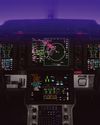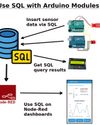Go Faster!

A few years ago, I got to test the physical limits of my Honda Fit during a safety training session. A short time later, I discovered I was interested in car racing. It's also a more popular hobby than you might think among Silicon Valley employees, who let their tuned private cars off the leash on racetracks like Laguna Seca in California - maybe because of the strict speed limit that typically applies on freeways in the US.
While studying the topic, I was surprised to learn that it's by no means just a matter of keeping your foot on the gas. If you want to break track records, you have to take the turns exactly in line with physical formulas and always find the ideal line in order to knock those vital seconds off your time in each lap. The physical principles of racing are explained in the reference work Going Faster by Carl Lopez [1]. The book describes exactly how quickly you can enter a turn without the car starting to skid and tells you the angle and time at which the driver needs to turn the steering wheel to lose as little time as possible while cornering.
Learning How to Race
The ideal line through a turn is never going to be the shortest path, which runs along the inside. Instead, the aim is to drive through the curve on a trajectory with as large a radius as possible (Figure 1). Before the 90-degree righthand bend shown in Figure 1, a worldclass driver like Jos Verstappen will initially steer to the left-hand edge of the road and then pull sharply to the right towards the apex. This means that the race car just barely scrapes past the inside of the curve, only to run over to the left side of the road again shortly afterwards on the straight that follows the turn. This means that the radius followed by the car is far larger than that of the turn, and that the car can negotiate the turn at a far faster speed without the tires losing traction or the vehicle skidding.
This story is from the #274/August 2023: The Best of Small Distros edition of Linux Magazine.
Start your 7-day Magzter GOLD free trial to access thousands of curated premium stories, and 9,000+ magazines and newspapers.
Already a subscriber ? Sign In
This story is from the #274/August 2023: The Best of Small Distros edition of Linux Magazine.
Start your 7-day Magzter GOLD free trial to access thousands of curated premium stories, and 9,000+ magazines and newspapers.
Already a subscriber? Sign In

MADDOG'S DOGHOUSE
Planning and community effort can help welcome Linux beginners online without precluding more advanced discussions.

Cash as Cash Can
Mike Schilli uses the YNAB tool to keep an eye on his finances. Until recently, YNAB didn't have a terminal Ul programmed in Go, but Mike delivers it here.

Innovator
Re-inventing the Ubuntu experience

Play video games natively on Linux Gaming Your Way
Bazzite, an immutable Linux distro adapted for gaming, lets you play your favorite video games on your PC, handheld, or home theater PC.

Installing mods on Steam Deck Steam Gems
The Steam Deck gaming console offers a galaxy of creative modifications for the games you love to play.

Zack's Kernel News
Chronicler Zack Brown reports on the latest news, views, dilemmas, and developments within the Linux kernel community.

System Monitoring
Mission Center, a graphical system monitor, groups all important system statuses in a compact, intuitive interface.

Exploring the Unbound DNS resolver Unbound
The Unbound DNS resolver offers comprehensive security and many other useful features.

MakerSpace
If you need to store long-term historical data, you can cobble together some Arduino modules, sensors, and displays and get them all to talk to an SQL server.

Mix It Up
Solve Bash blind spots by embedding other scripting languages into your Bash scripts to get the features you need. Pete shows you solutions for floating-point math, charting, GUIs, and hardware integration.
